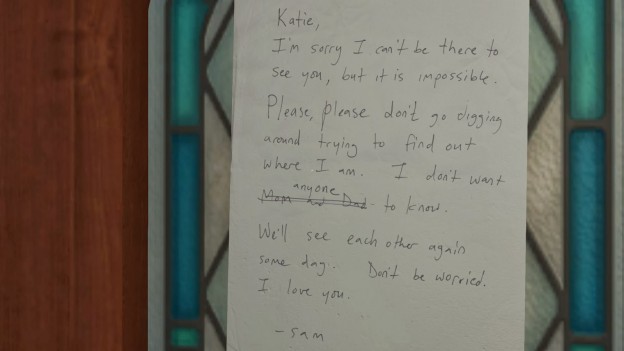Gone Home is a graphic adventure game in which the player takes on the role of Katie Greenbriar, returning to her family home after a year abroad in Europe. It is a dark and stormy night, the door is locked, no one is home and there’s a cryptic note on the door from your sister, Sam. So begins this first person adventure in which the player explores the house to uncover a family’s secrets. Much lauded for its new approach to storytelling, Gone Home is really about the little things and how they add up into something larger than the sum of their parts. The player works almost like a historian, sifting through the family’s stuff and creating meaning from small chunks of information [1]. Gone Home takes a narrative, fractures it into a hundred pieces and puts only some of them into the game. The narrative fragments take different forms: a ticket stub here, a voice recording there, a bottle of hair dye. But all work together to help the player create meaning. From a design standpoint, there are several critical factors at play. The first is that the player must participate in the meaning making process. Second, objects can create and reference pre-established meaning through juxtaposition with other objects, their form and context. Lastly, but perhaps most importantly, is the quality of the narrative itself: a game that focuses on narrative needs a strong narrative, or at least a concept, to guide the design process. Gone Home and other related games like Dear Esther, 30 Flights of Lovin’ and Trauma represent a new direction in games, or interactive experiences, that privilege narrative over mechanics [2, 3, 4]. While critically acclaimed, a significant number of players report disappointment with the lack of traditional game like qualities. Part of this response is undoubtedly due simply to player preferences. The main issue is, however, the fact that creating narrative driven games is a frontier and these games are taking risks and putting forward new ways of incorporating story elements. As part of ongoing research on improving the understanding of narrative in gameplay, this article seeks to explore design strengths and weaknesses in Gone Home.
Editors’ Choice: Gone Home and Its Hidden Objects

